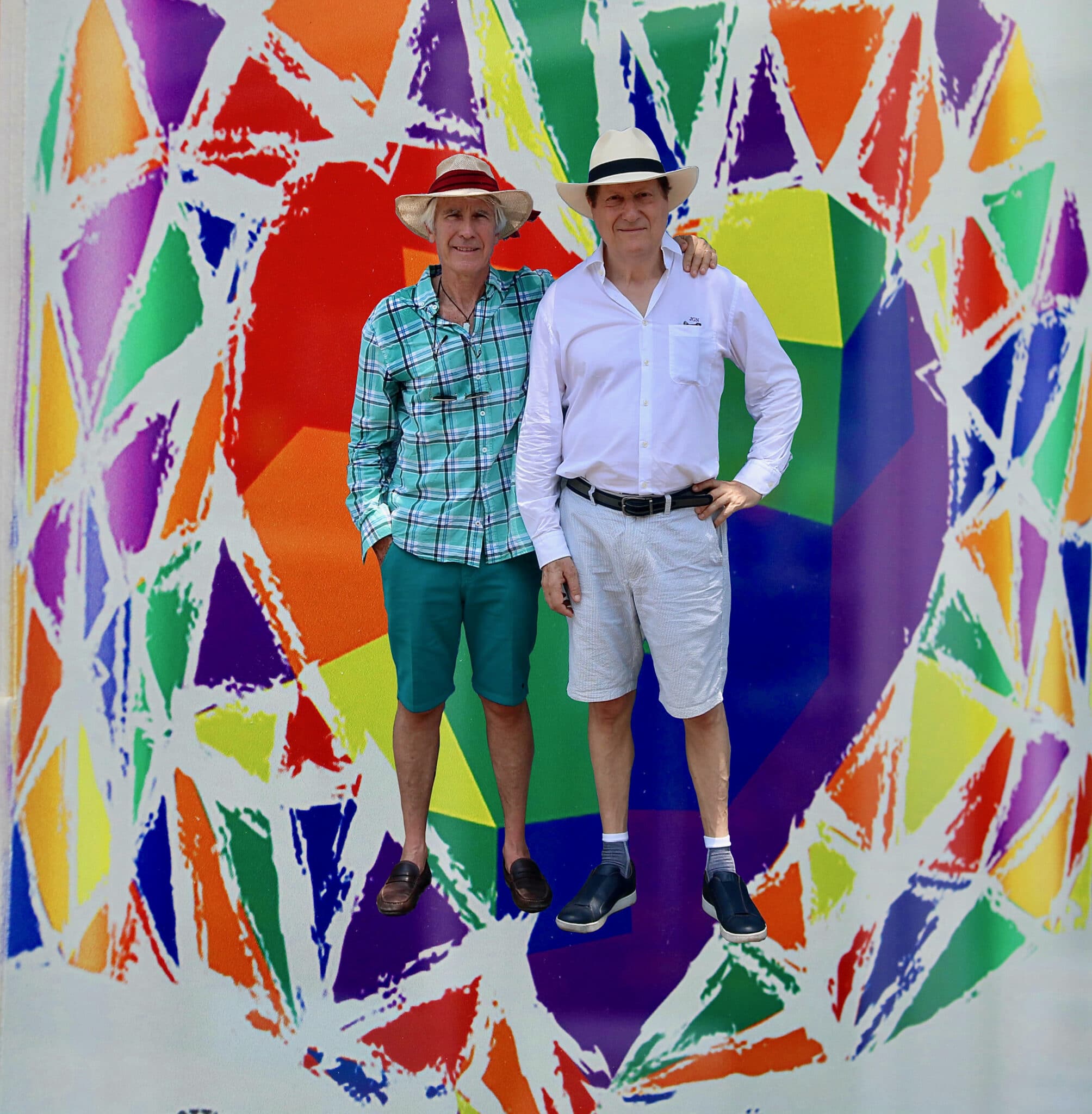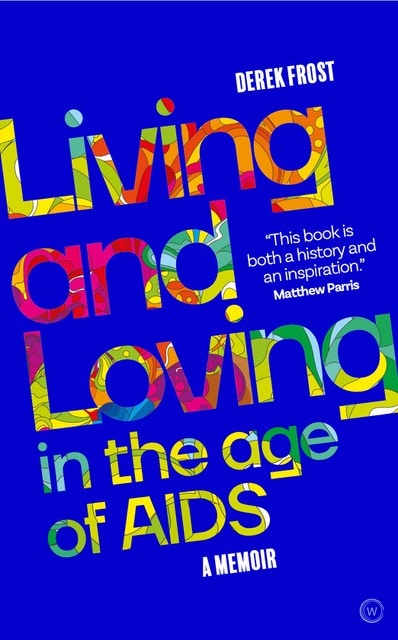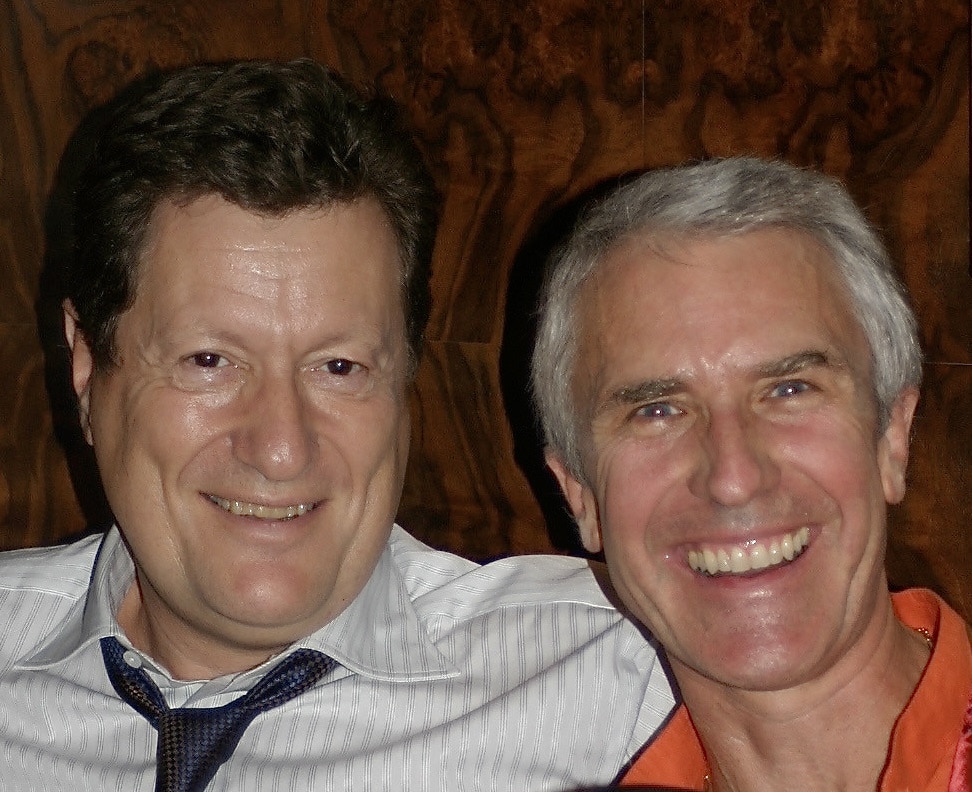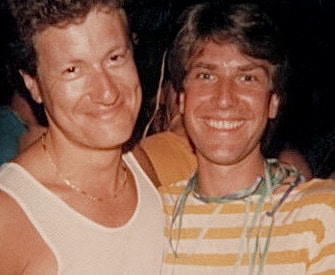Gay man faced ‘probable death’ after positive HIV test in 1991. 30 years on, he’s thriving – and saving lives
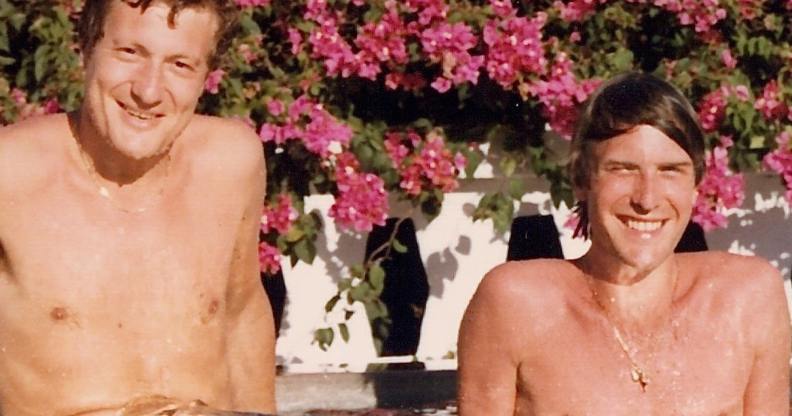
Jeremy Norman (L) and Derek Frost (R) in 1980, shortly before the AIDS epidemic hit. (Provided)
Jeremy Norman (L) and Derek Frost (R) in 1980, shortly before the AIDS epidemic hit. (Provided)
Derek Frost was filled with “terrible dread” when he received a phone call from his partner, Jeremy Norman, in April 1991.
Jeremy phoned from Miami to tell Derek that he was feeling unwell. He had a pain in his throat and he had developed sores around his mouth that just wouldn’t go away. Both men knew what these symptoms meant: after years of dodging HIV, the virus had come knocking at their door. Jeremy ultimately tested positive for HIV, while Derek – by some stroke of luck – tested negative.
“It was a very frightening moment, because not only were you facing probable death within two to three years, but also, in many cases, you were facing a particularly unpleasant form of death, and a lot of pain and fear before the dying,” Jeremy tells PinkNews.
Despite this, Jeremy remained convinced that he would live – and miraculously, he was right.
“I did have this extraordinary feeling that I was going to survive. Maybe it was just bravado – who knows. But I just had that real, core belief that somehow I would beat this thing,” he explains.
The couple’s experience is detailed in Derek Frost’s memoir Living and Loving in the Age of AIDS, which charts their journey from fun-loving young gay men reaping the rewards of gay liberation to living through a terrifying epidemic. Many queer people will recognise the heartache, the suffering and the pain in the book – but many will also recognise the joy that comes with being part of a community.
Derek Frost and Jeremy Norman reaped the benefits of gay liberation – and then AIDS hit
Derek and Jeremy first met in 1977, long before anyone had even heard of HIV or AIDS. They fell madly in love and built a relationship that has lasted to this day. They were part of a new generation of queer people in England who came of age directly after the partial decriminalisation of homosexuality in 1967. Jeremy founded Heaven nightclub in London in 1979 as the sense of celebration reached a crescendo for out, city-dwelling queer people.
“I think it’s hard to imagine now how big the celebration was, that feeling of liberation post legalisation,” Derek says. “Homosexuality was illegal – we were criminals, and suddenly we weren’t criminals. And that was a really big deal to celebrate.”
For a number of years, Derek and Jeremy enjoyed their newfound freedom as young gay men. They partied, had sex, made friends and travelled – and then, things started to change. In 1981, the New York Times published an article about a mysterious “gay cancer” that was affecting a small number of queer men.
“It started as the tiniest little whisper,” Derek says. “It started with a tiny voice that no wanted to hear in the middle of a big party, and gradually, that voice became blacker and louder and more frightening. It didn’t happen like a big bang, it was the opposite of that, I would say. No one likes bad news, so people tended not to pay attention to it, and very few people were sick at that stage.”
“Sex is – I’m sure it is now as it was for us – so central to a young gay man’s life,” Jeremy adds. “The idea that you might have to somehow curb your sexual activity was a message that no one wanted to hear, so people – and this is demonstrated in It’s a Sin – people grasped at anything. ‘Oh, it can’t be a virus that just affects gay men.’ We found every excuse not to believe it. It was only after we started knowing friends who died that you could no longer hide your head in the sand.”
Before long, Derek and Jeremy became involved in AIDS activism, no longer able to hide from the horrifying reality of the virus that was decimating their community. In 1985, Derek visited Mount Sinai Hospital in New York City with AIDS councillor Dorothy Hancock. He was shocked by what he saw there – “skeletally thin and sick young men marked by signs of extreme illness”. Even more disturbing was that many had been abandoned by their families, friends and medical professionals. Another formative experience was when they saw The Normal Heart, Larry Kramer’s seminal AIDS-era play. Those experiences – and the loss of countless friends – radicalised Derek and Jeremy. They became increasingly angry at the lack of action from governments across the world. Derek describes Ronald Reagan as “the biggest monster” of the era, nothing that his refusal to even utter the word “AIDS” contributed to the untimely deaths of thousands of Americans.
It was traumatic to face the very high probability that Jeremy, my partner, my love, would die.
It was a terrifying time for queer people, and acts of kindness from allies are still remembered fondly to this day. In his book, Derek recounts the remarkable efforts of Princess Diana, who famously opened England’s first dedicated AIDS ward in 1987, shaking hands with 10 patients in the process. This, at a time when many people were afraid to get too close to a person with HIV, was remarkable. Her actions had an “enormous” impact, Derek says.
“She did it absolutely knowingly. Who knows what her private motives were, but she was undoubtedly a very compassionate lady. She took a very, very definite decision in the face of all the stigma against AIDS to say, ‘Actually, I know I’ve got huge influence and I’m going to hug this person or touch their hand.'”
Jeremy, an entrepreneur, ran a chain of gyms called Soho Gyms in the 1990s, which catered primarily to gay men – and to Princess Diana, of course.
“It’s not really much discussed, but she really liked gay guys,” Jeremy says. “She really felt at ease with gay men, she could relate to them and she didn’t feel threatened by them in any way. They were just friends she could hang out with. And when we bought the Earl’s Court Gym when I was expanding the Soho Gyms group, she was a member there. That was the gym she was a member of when she died, and she would work out there. I think we closed the gym for a couple of hours three times a week for her.”
Derek adds: “She liked gay people… I think she genuinely felt that it was utterly tragic that so many young people were dying, as we all did, and she did something about it.”
Derek and Jeremy have worked tirelessly to fight AIDS across the world
But no amount of activism from high-profile figures could detract from the fact that, without help, the LGBT+ community was doomed. As the ’80s came to a close, there was still no effective HIV treatment available – and then came Jeremy’s diagnosis, landing like a bolt from the blue into their lives.
“It was traumatic to face the very high probability that Jeremy, my partner, my love, would die,” Derek says. At first, it seemed inevitable – even if Jeremy believed he would survive – but the years just kept on rolling by. In his book, Derek details the darkness of those days – how the virus loomed over their lives, constantly threatening to swoop in and steal their happiness. Amazingly, Jeremy lived to see effective treatment become a reality in 1997, offering him the gift of life. Antiretroviral drugs stopped people with HIV from progressing on to AIDS by reducing the viral load in their blood to an undetectable level. Today, effective treatment means that people with HIV live long, happy and healthy lives – but only if you can actually pay for the drugs.
The world is an inherently unequal place, and millions of people with HIV still cannot access antiretroviral drugs today. The result is that an estimated 690,000 people died from AIDS-related illnesses in 2019, despite the fact that effective treatment has been available for more than two decades. It was this inequality that inspired Jeremy and Derek to set up AIDS Ark, a charity that works to provide people in developing countries with life-saving medication.
“One thing I find amazing about Jeremy is that he first suggested AIDS Ark in 1995, before the arrival of effective medication,” Derek says. “At a time when his life was still very threatened, he was already thinking about what we could do for other people. That’s quite something.”
Looking back, Derek says it’s one of his “biggest regrets” that they didn’t set up AIDS Ark until 2002, a full five years after Jeremy was given antiretroviral medication.
“For us, as with lots of people, the period of time after the arrival of effective medication… it was a period of mending, where we weren’t ready to do what AIDS Ark took. AIDS Ark was very challenging to get off the ground. Some of it was very upsetting. We had spent that long period of time surrounded by our friends dying, and it was kind of diving back into that world of a whole other group of people dying. I wish it had happened sooner, but we weren’t ready – but the fact that Jeremy mentioned it even before medication came along says something very beautiful about Jeremy and his spirit.”
Jeremy says they have kept “in close touch” with many of the doctors they have worked without over the years, and they have had the privilege of meeting people whose lives they have saved.
“I think there is probably nothing quite as moving, almost up there with falling in love in a way, to actually hold the hand of someone you know you have saved. It’s an incredible privilege and it’s the payback that you get from doing that sort of work,” he says.
I don’t know how or why I survived, but I did, and I’m eternally grateful.
Derek and Jeremy are conscious that, for young people today, it can be difficult to fully comprehend what it was like to live through the worst years of the AIDS crisis. That is one of the reasons they were thankful for Russell T Davies’ critically-acclaimed drama It’s a Sin, which took the UK by storm when it premiered in January. Watching the series was a powerful and often heartbreaking experience for the couple.
“It’s as brilliant television, incredibly skilful,” Derek says. “Russell T Davies, the fact that he spun a fabulous tale where we all fell in love with all the people and then they all started to die off, it was utterly compelling TV. It was accurate, of course, and it was very, very sad. The fact that it’s awoken so much attention, and demand amongst young people to want to know more about this thing that they weren’t taught in school that elder members of their communities suffered is hugely gratifying.”
Jeremy, meanwhile, was thrilled to see Heaven represented in It’s a Sin. “He reproduced the Heaven logo as it was in our day. We had a big neon sign, exactly like the one on the show. They must have had it made again.”
Looking back on his journey, Jeremy says it’s a “miracle” that he’s still alive – but not a God-given one.
“I don’t believe in God, but it is a miracle, and I imagine that my father felt the same thing when, can you believe it, he fought in the First World War and was wounded in the Somme and survived. Otherwise, I wouldn’t be here. But I mean he must have had a similar sense of unbelievable good luck to have survived that experience, and certainly it was. I don’t know how or why I survived, but I did, and I’m eternally grateful. And I hope I paid back some of my dues, at least, through AIDS Ark.”
Both Derek and Jeremy want the public to remember that the fight against AIDS is not yet over – even if it might feel like a part of the past.
“It’s still very much a live problem,” Derek says. “If in a magic world it were possible to supply PrEP free of charge to everyone who’s sexually active across the planet – which would not be an impossible task, given what’s happening with COVID and vaccines – if we put our mind to it, AIDS would shrivel up and go. That would be great. And it is possible, and it probably will happen – and then we can all get back to f**king without fear and have a jolly, nice life like we used to have.”
Living and Loving in the Age of AIDS is out now. All revenue due to the author will be donated to AIDS Ark.
